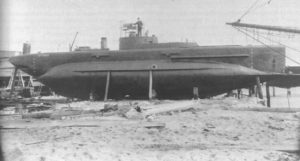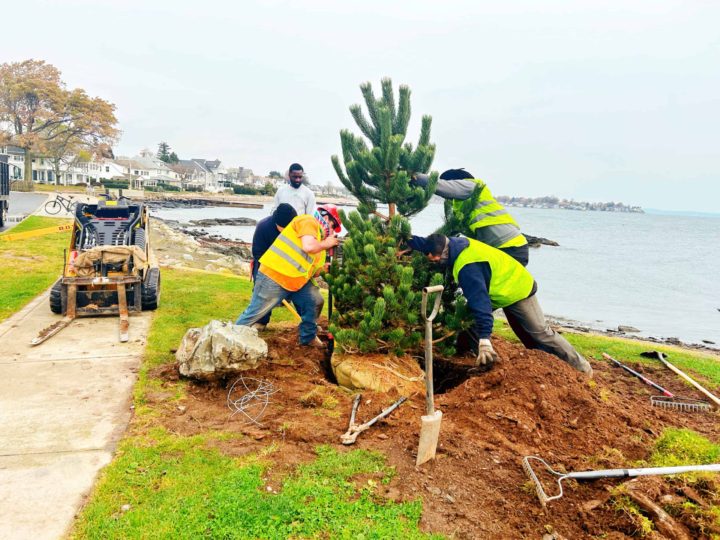
A tremendous amount of excitement and media attention followed the news on April 16, 2023, that a team from Shoreline Divers had identified the sunken remains of Defender, the 1907 submarine designed and built by Milford’s Simon Lake.
Scuttled by the Army Corps of Engineers in 1946, Defender was “legitimately hiding in plain sight” in Long Island Sound off the coast of Old Saybrook, according to Shoreline Diving Services VP Richard Simon. “It’s on the charts. It’s known about in Long Island Sound, just no one knew what it was until we identified it.”
The discovery of Defender’s remains has thrown the spotlight back on inventor Simon Lake, a Milford resident considered a pioneer in the development of the submarine. Lake lived in Milford for almost 40 years. He purchased the property at 135 Broad Street (until recently Smith Funeral Home and now Metro on Broad Apartments) in 1907 and remained in Milford until his death in 1945 at the age of 79.
Defender was built in Newport News, Virginia, the same year Lake moved to Milford, having previously resided in Europe, where he designed submarines for the German, Russian, and Austro-Hungarian navies. Lake was convinced his latest sub would win a hefty contract from the U.S. Navy. But it was not to be. The contract went to Lake’s arch nemesis John Holland (founder of Electric Boat), though by 1912 Lake had succeeded in building submarines for the Navy. With almost 200 patents to his name, including those for ballast tanks and diving planes, over time he became known as “the Father of the Modern Submarine.”
Eventually the sub—originally named Lake—was rebuilt to try to correct some of its deficiencies and renamed Defender. But the Navy still wasn’t interested. Years passed, and though Lake had retrofitted the ship for salvage at his Bridgeport facility, it never managed to achieve the glory that Lake envisioned, despite a flashy 1929 PR ploy featuring famed aviatrix Amelia Earhart. Defender languished at a New London dock for years and somehow wound up stuck on a mudflat off Old Saybrook before the Army Corps of Engineers towed it into Long Island Sound and scuttled her.
And there the story lay for 77 years, until April, when another Simon—Richard Simon—and his diving team located and identified Defender in 150 feet of water.
 Just as Simon Lake was influenced by the tales of life under the water as envisioned by Jules Verne’s classic 20,000 Leagues Under the Sea, Richard Simon was influenced by tales of Simon Lake. “Stories about Lake and his inventions fascinated me,” he said when the announcement of the discovery was made. Simon, who researched the vessel and its history, grew up hearing stories of Lake’s work from ship captains and explorers. Prior to launching their search, he and his team did as much research as possible on Defender. “The secret to identifying this historical relic was to connect the available research to the stories.”
Just as Simon Lake was influenced by the tales of life under the water as envisioned by Jules Verne’s classic 20,000 Leagues Under the Sea, Richard Simon was influenced by tales of Simon Lake. “Stories about Lake and his inventions fascinated me,” he said when the announcement of the discovery was made. Simon, who researched the vessel and its history, grew up hearing stories of Lake’s work from ship captains and explorers. Prior to launching their search, he and his team did as much research as possible on Defender. “The secret to identifying this historical relic was to connect the available research to the stories.”
The wreckage of Defender had been previously surveyed by both NOAA and Eastern Search and Survey and was marked as “unidentified” both times. But Simon noticed that the size of the wreckage was consistent with Defender’s dimensions. Onboard his vessel R/V Integrity, Simon and his dive team’s first attempt at identification was called off due to poor conditions. Two days later, they succeeded. “You could say Defender was hiding in plain sight all this time in a waterway I’ve traveled for years.”
Somewhere, the spirit of Simon Lake is smiling over the fact that his long-ignored submarine has finally gotten the attention he always felt it deserved.
—Ann McGuire





